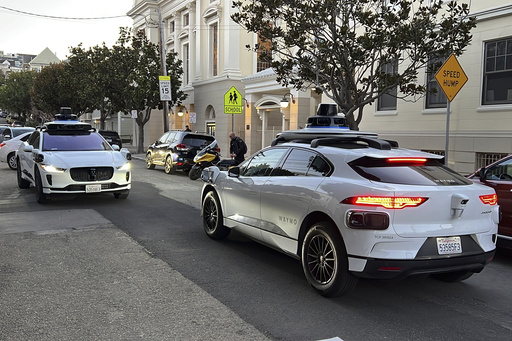
Waymo has officially launched its robotaxi service for the general public in Los Angeles as of Tuesday, representing a significant development in the realm of autonomous vehicle technology. This milestone comes 15 years after the initiative began as a confidential project under Google.
The opening to the public follows an eight-month initial phase where rides were only available to a select group of riders from a waiting list that had grown to over 300,000 individuals. Now, anyone possessing the Waymo One smartphone application can request a ride throughout an expansive territory of 80 square miles (129 square kilometers) across the bustling city of Los Angeles, which is the second-largest city in the United States.
Waymo initially received approval from state regulators in California to charge for its rides 15 months ago and first focused its efforts in San Francisco before expanding to Los Angeles. Prior to entering the competitive arena against established ride-hailing services like Uber and Lyft in California, the company successfully launched its driverless services in Phoenix in 2020, consistently broadening its operational footprint in that region over time.
Waymo has demonstrated that its driverless rides are more than just a novelty, with claims that over 50,000 passengers are transported weekly in its autonomous vehicles. These impressive numbers aided the company in recently securing $5.6 billion in funding from its parent company Alphabet, along with backing from notable investors, including venture capital firm Andreessen Horowitz and financial management company T. Rowe Price.
“Our service has matured swiftly, and riders are beginning to appreciate the numerous advantages of completely autonomous driving,” remarked Waymo co-CEO Tekedra Mawakana in a recent blog post.
Despite its advancements and growing user base, Waymo continues to face financial challenges, as it is believed to be operating at a loss. Alphabet has not disclosed the financial performance of Waymo, but it remains a significant part of the “Other Bets” division, which reported an operating deficit of $3.3 billion in the first nine months of this year, an improvement compared to a $4.2 billion loss during the same period last year.
Since its inception as part of the “Chauffeur” project in 2009, under Google’s umbrella, Waymo has significantly evolved since its spin-off in 2016 and has emerged as a leading force in the increasingly crowded robotaxi sector. Electric car manufacturer Tesla has plans for its own competing “Cybercab” service expected to launch by 2026, although CEO Elon Musk has expressed hopes for receiving necessary regulatory approvals to operate in California and Texas as soon as next year.
However, skepticism surrounds Tesla’s proposed timeline, given Musk’s past unfulfilled commitments regarding self-driving technology. Currently, Waymo’s robotaxis have traveled over 20 million miles in fully autonomous mode and have completed over 2 million rides without involving serious accidents that might impede its services.
This strong safety record starkly contrasts with that of Cruise, another player in the robotaxi market owned by General Motors, which had its California operating license suspended last year following a serious incident in San Francisco where a pedestrian was seriously injured by a vehicle.
Cruise is now actively working to recover its standing by partnering with Uber to launch some of its services next year in unspecified U.S. cities, while Waymo has similarly allied with Uber to provide its robotaxi services in Atlanta and Austin, Texas in the coming year. Additionally, Amazon’s Zoox aims to start driverless operations for the public in Las Vegas next year, with plans to expand to San Francisco thereafter.
